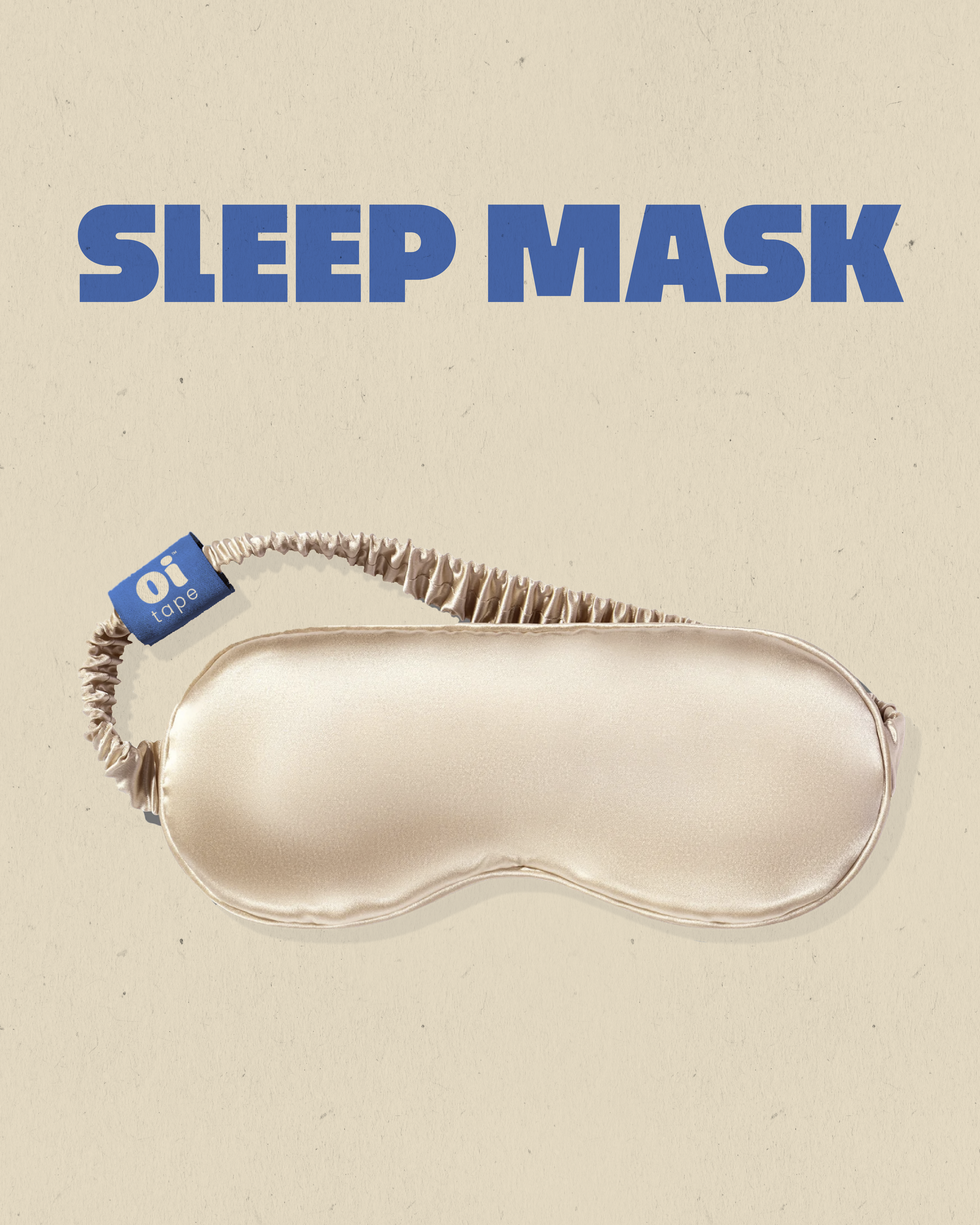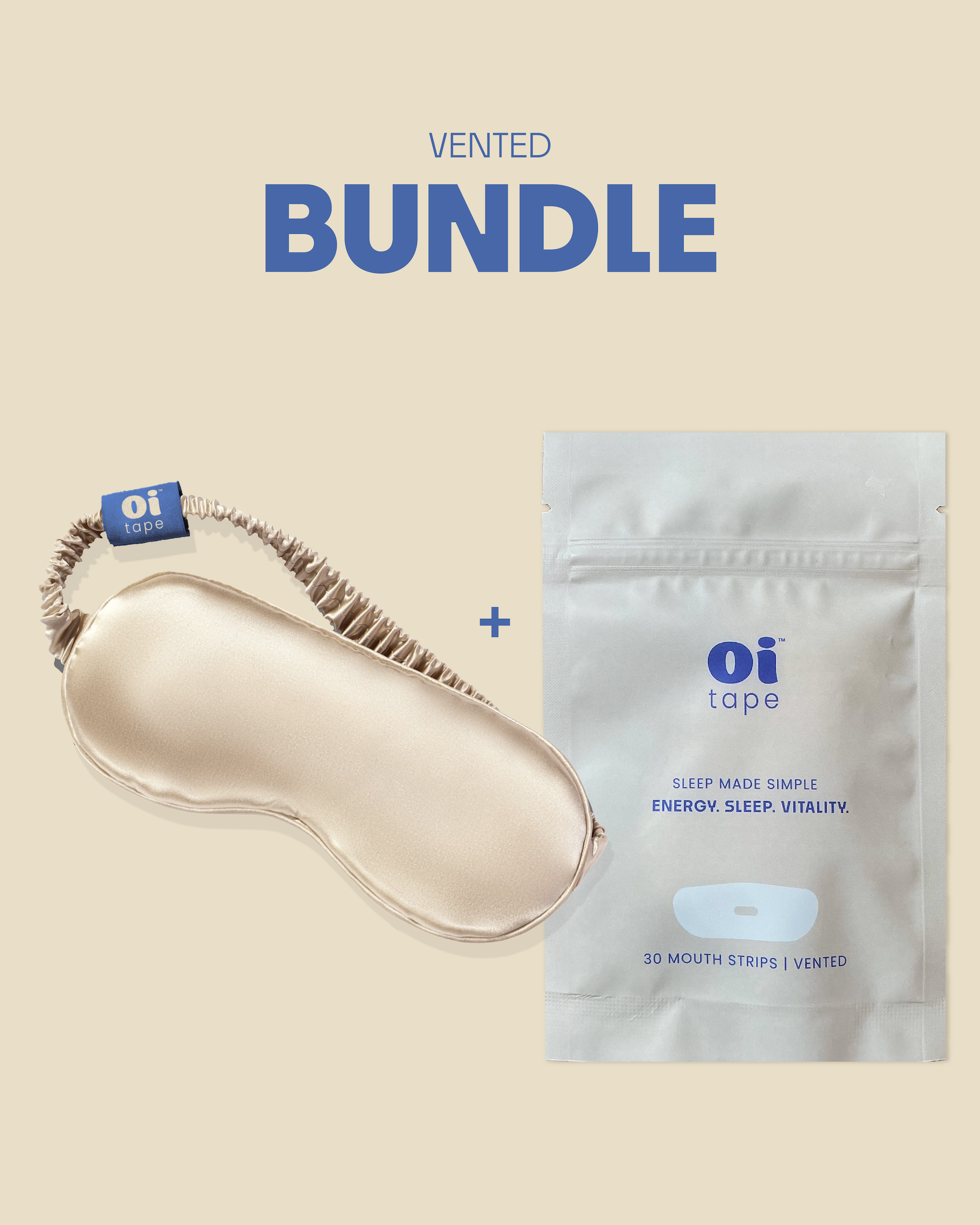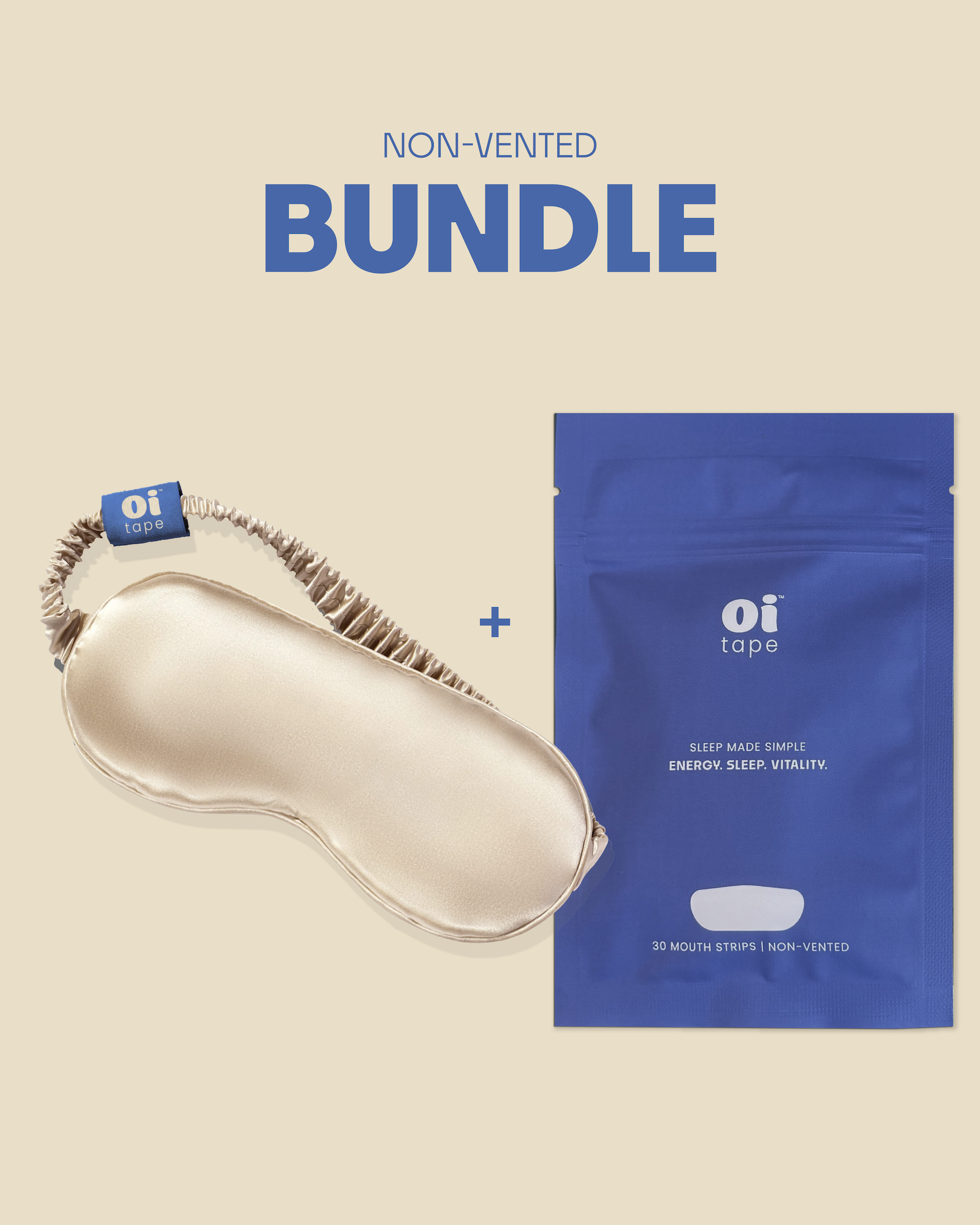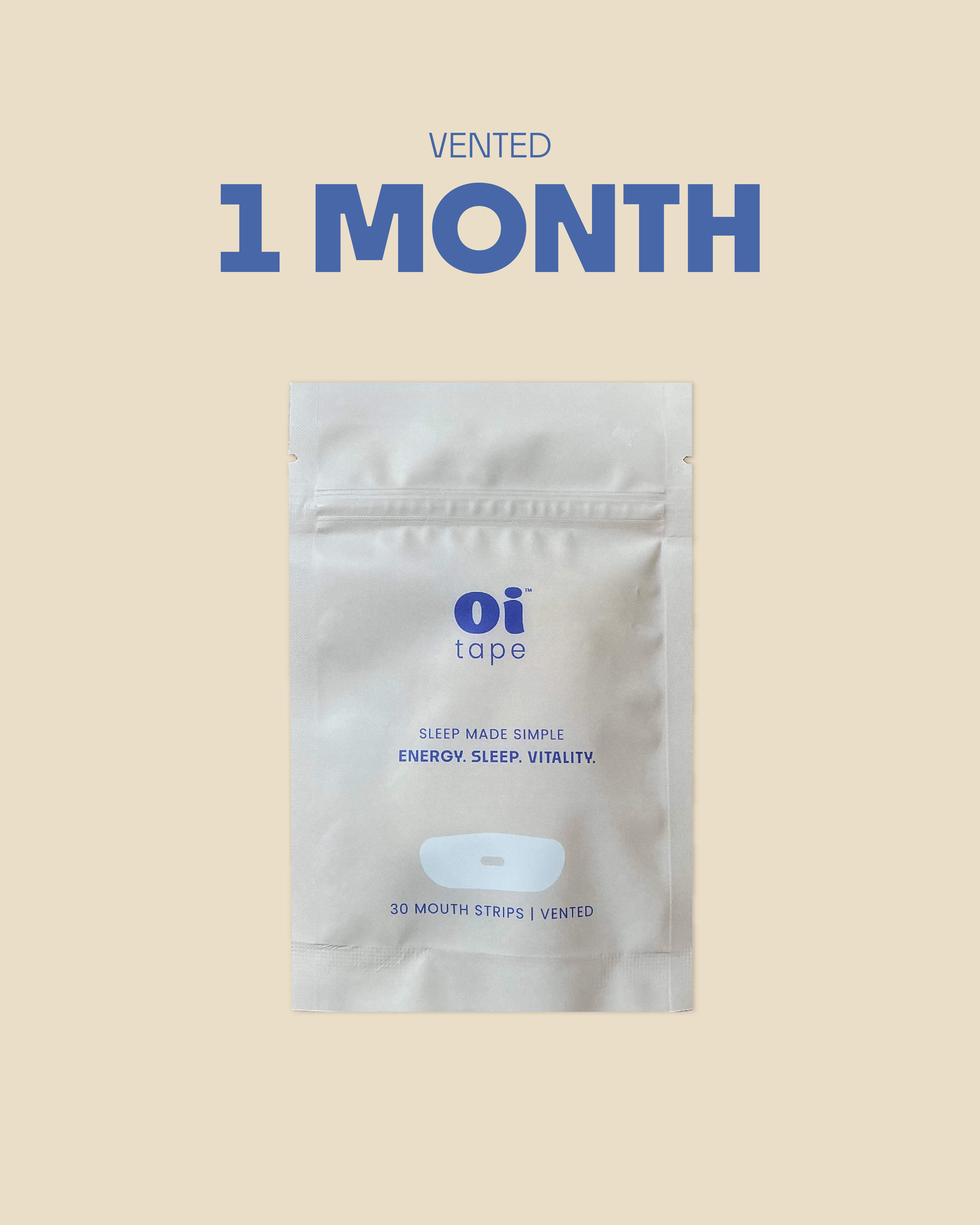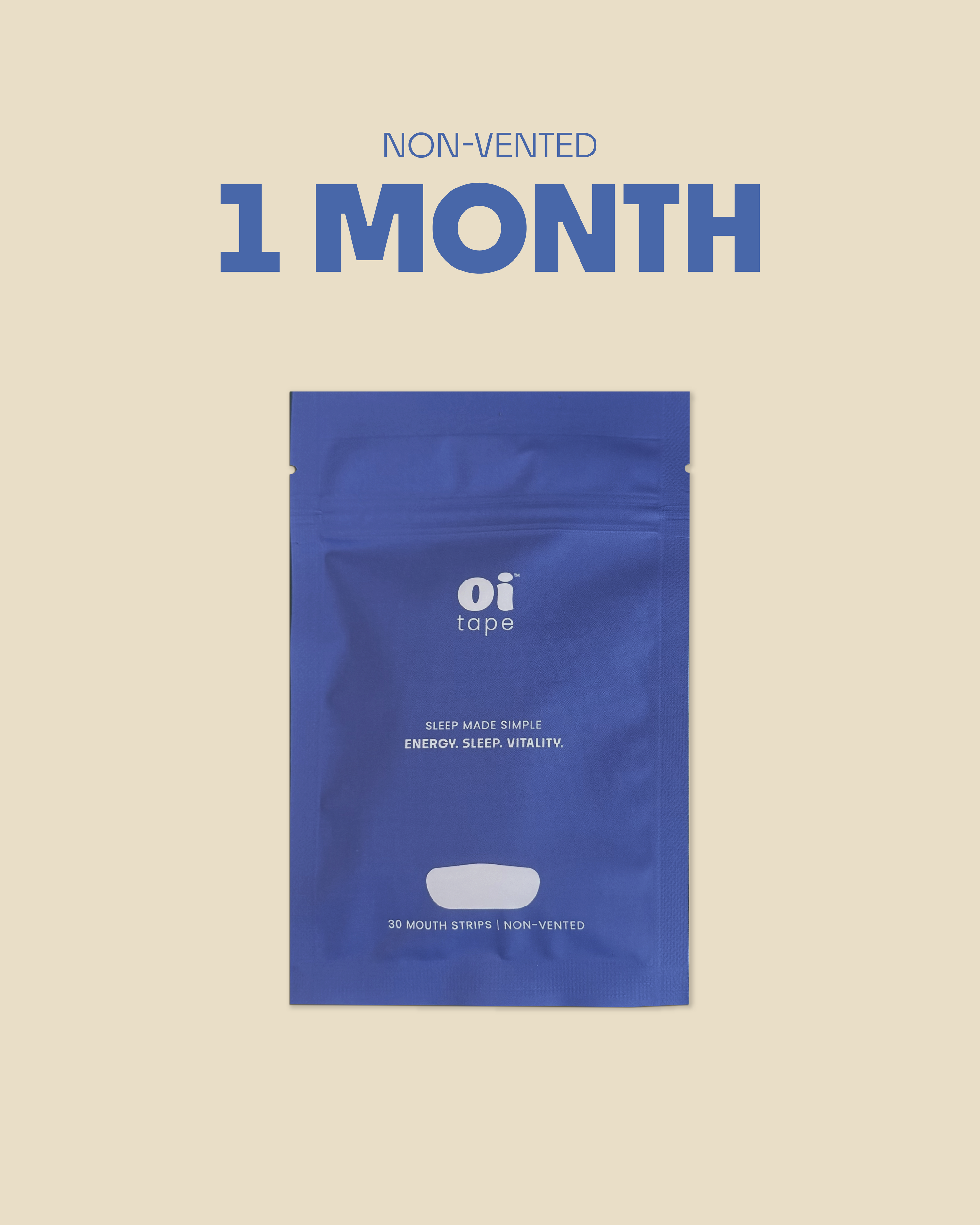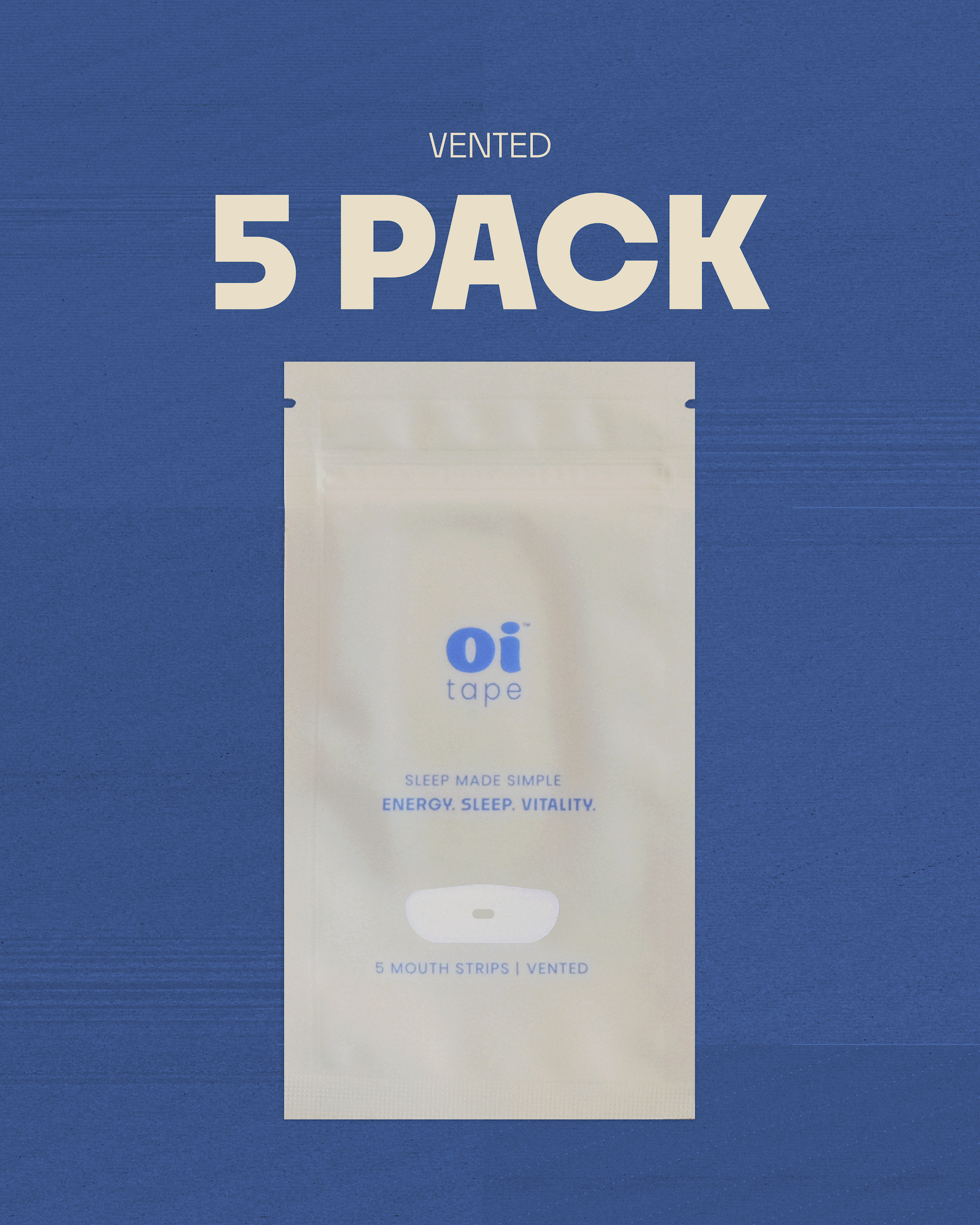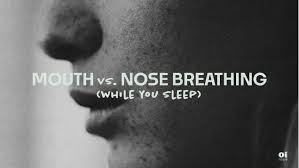

Mouth vs Nose Breathing While You Sleep | oi tape™
What Is Mouth Breathing?
Mouth breathing occurs when you inhale and exhale primarily through your mouth instead of your nose. While it may seem harmless, this habit can cause several health issues—especially when it happens during sleep.
Breathing through the nose is naturally more beneficial. The nasal passages filter, warm, and humidify air before it reaches the lungs, while mouth breathing bypasses these processes. Over time, this can lead to dry mouth, sore throat, bad breath, and poor sleep quality.
Mouth breathing can result from underlying conditions such as nasal congestion, allergies, deviated septum, or enlarged tonsils. It also connects to sleep disorders like snoring and obstructive sleep apnea. Chronic mouth breathing in children can change how their face grows and how their teeth align. In adults, it can lead to sleep problems and tiredness during the day.
Understanding the difference between mouth breathing vs. nose breathing is essential to improving overall health and sleep performance.
Why Nose Breathing Is Essential
Nose breathing plays a vital role in maintaining optimal health and restful sleep. It’s your body’s natural way to filter and condition the air you breathe. Tiny nasal hairs and mucus trap dust, allergens, and pathogens, protecting your respiratory system.
Nasal breathing helps make nitric oxide. This compound improves oxygen flow and helps control blood pressure. This process enhances airflow, reduces snoring, and supports deeper, more restorative sleep.
Breathing through your nose helps balance oxygen and carbon dioxide. This improves sleep and helps your body repair itself at night.
Habitual mouth breathing can dry out your airways. It can also reduce oxygen absorption and disrupt your sleep. This can leave you feeling groggy and unrested.
Encouraging nasal breathing not only enhances sleep quality but also benefits your cardiovascular, immune, and respiratory systems.
Health Risks Associated with Mouth Breathing
Chronic mouth breathing can lead to several short-term and long-term health issues, including:
-
Dry mouth and bad breath: Reduced saliva flow allows bacteria to thrive.
-
Tooth decay and gum disease: Saliva helps neutralize acids and protect enamel.
-
Sleep disorders: Mouth breathing increases the likelihood of snoring and sleep apnea.
-
Facial structure changes: In children, it can affect jaw growth and cause a long, narrow facial shape.
-
Fatigue and brain fog: Poor oxygen exchange and disrupted sleep lead to lower energy and concentration.
By fixing mouth breathing habits, you can breathe better, improve oral health, and boost brain performance. This also lowers your risk of chronic fatigue and sleep problems.
How to Transition from Mouth Breathing to Nose Breathing
Training your body to breathe through your nose while sleeping can significantly enhance rest and recovery. Here are some effective strategies:
-
Practice nasal breathing during the day. Spend a few minutes consciously breathing through your nose while keeping your lips closed.
-
-
Address nasal congestion. Use saline rinses or nasal sprays to clear blockages that may force you to mouth breathe.
-
-
Optimize your sleep position. Sleeping on your side with a supportive pillow helps maintain open airways.
-
-
Maintain a clean, humid environment. Use an air purifier and humidifier to reduce allergens and keep airways moist.
-
-
Engage in regular exercise. Physical activity improves lung capacity and strengthens the diaphragm, encouraging nasal breathing.
-
You may also explore mouth taping as a behavioral training technique. Mouth tape, such as OI Tape from oitape.com, gently encourages nasal breathing by keeping the lips closed during sleep. You can also use it during meditation, workouts, or relaxation to improve breathing efficiency and reduce snoring.
Products and Practices to Support Healthy Breathing While You Sleep
Creating an environment that promotes nasal breathing can dramatically improve your sleep quality. Consider the following adjustments to your bedroom setup:
-
Air Purifier: Reduces allergens and pollutants that trigger nasal congestion.
-
Humidifier: Adds moisture to dry air, preventing throat irritation and dry mouth.
-
Supportive Pillow: Keeps your neck aligned and airways open, making nasal breathing easier.
-
Blackout Curtains: Block external light to support melatonin production and deeper sleep.
-
White Noise Machine: Masks disruptive sounds, helping you maintain consistent breathing patterns.
These small environmental upgrades can help prevent nighttime congestion, encourage nose breathing, and promote a calmer, more restorative sleep.
Final Thoughts: Choose Healthier Breathing for Better Sleep
Your breathing habits directly influence your sleep quality, energy levels, and overall health. Mouth breathing can block oxygen flow and raise health risks. In contrast, nose breathing helps you relax, sleep better, and supports your body’s natural healing.
You can improve your breathing habits by making small lifestyle changes. Try improving your sleep environment, fixing nasal issues, and using mouth tape. The result? Better rest, fewer sleep interruptions, and improved long-term wellness.

